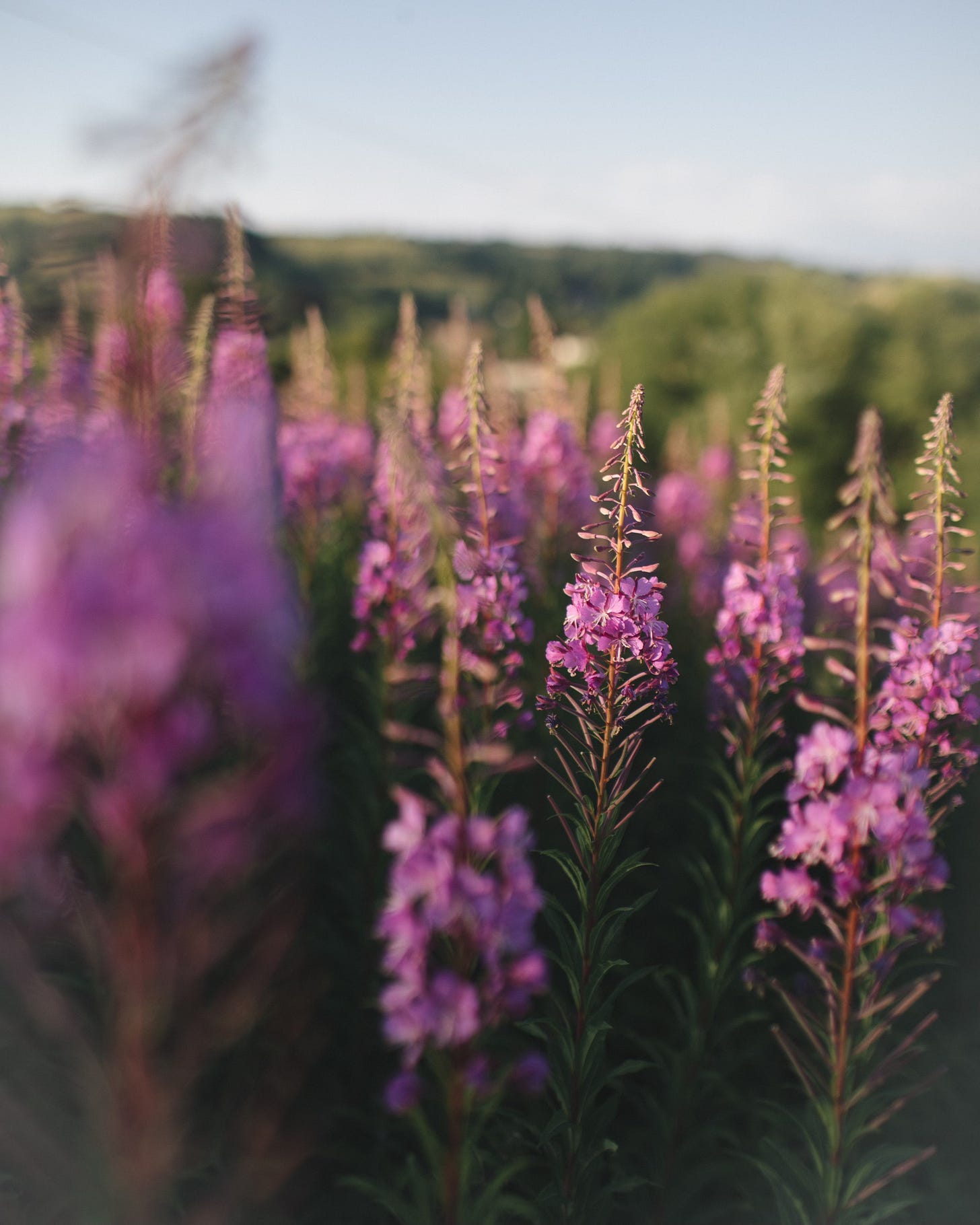It is a fireweed summer. One where the wind blows warm in the lanes and the low sun sparkles as fireweed fans its flames on the verges. Tall pink plumes wave along the edges of fields, catching July light. Fireweed is a coloniser—it grows where soil has been disturbed. When its seeds—spread on silky threads then hidden dormant in the ground—are exposed to light, they germinate and quickly grow. Catching the train to London I spot it from the window, smouldering along the embankments: a flower of roadsides and railways, of sidings and scrubland.
Fireweed is a rejuvenator, a sign of hope from the ashes. It was sometimes known as ‘bombweed’, due to its talent for flourishing in post-war craters. To me, fireweed—its gentle name Rosebay Willowherb—is the flower of July, just as roses are the flowers of June, and Cow Parsley is of May. Fireweed heralds the arrival of those few brief weeks where summer burns pure and bright. During that long, strange summer four years ago, when the world stood still, I discovered a huge patch of fireweed behind the shut school, on the side of a hill. Picking my way through brambles, I wove my way into the heart of it, the tickle of heatless flames licking at my legs. I looked down over the frozen town and watched a buzzard languidly circle over the rooftops. The flowers drew me close with flickering fingers, and I felt myself begin to thaw.
Here’s what I’ve been reading and loving this month:
Keep reading with a 7-day free trial
Subscribe to Small Stories with Laura Pashby to keep reading this post and get 7 days of free access to the full post archives.





